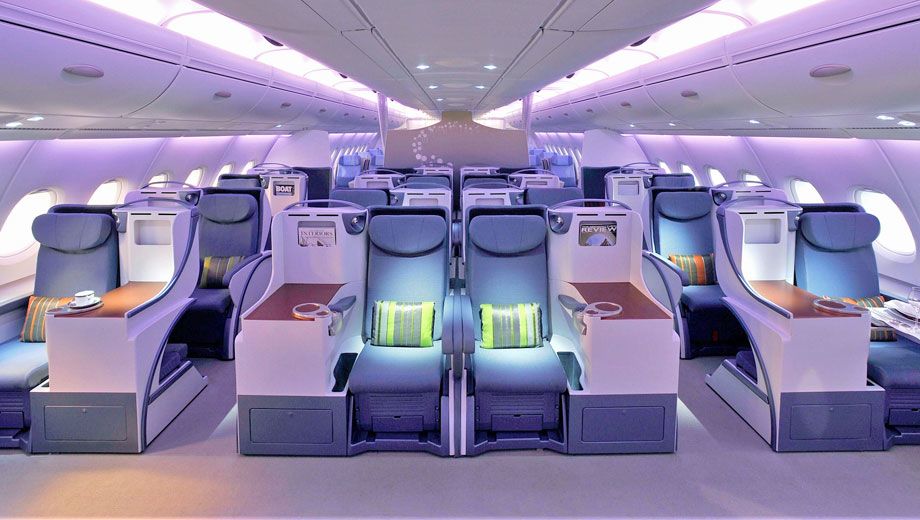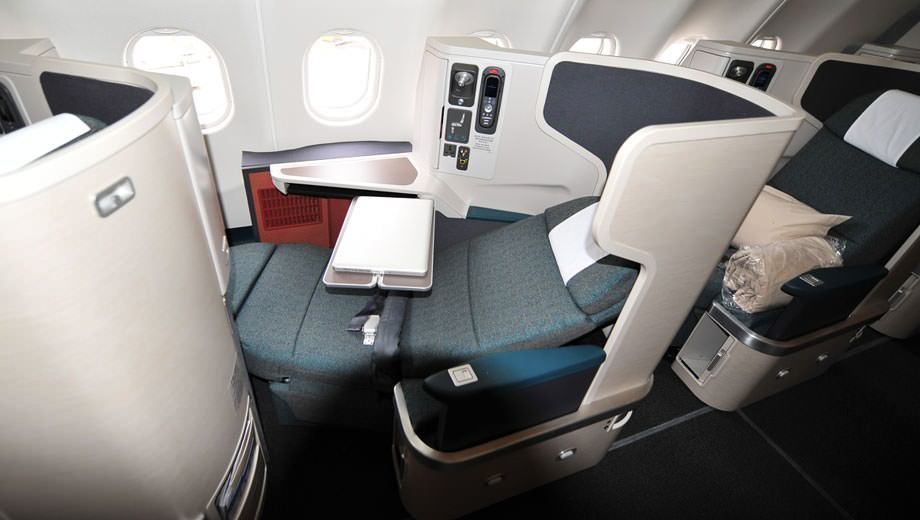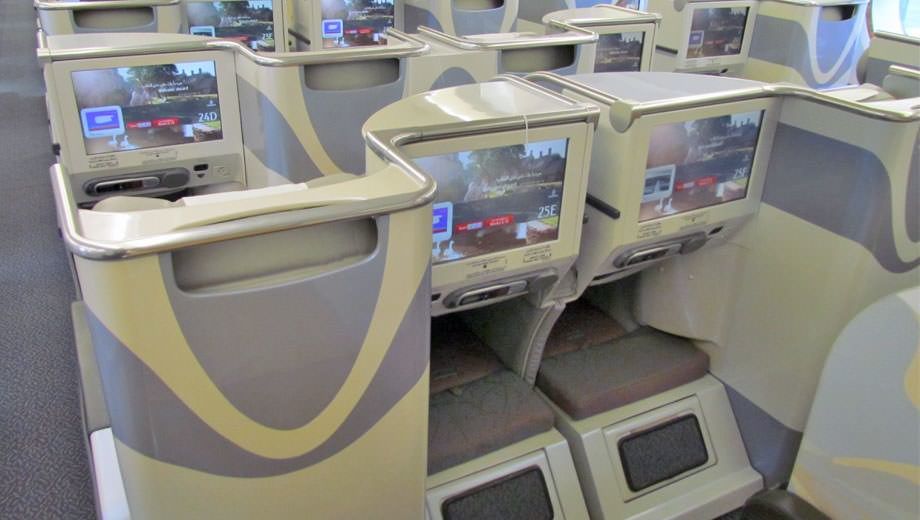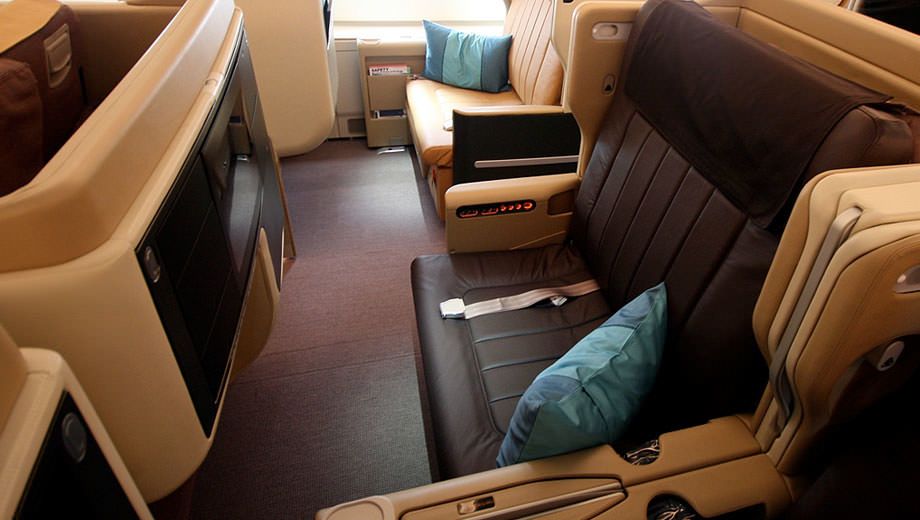Why direct aisle access is so important for a business class seat

Every so often when we review business class seats or put together one of our best seats guides for the pointy end of the plane, we get questions asking why we place such a premium on having direct aisle access.
The answer revolves around an undisturbed flight: privacy, the ability to get out of your seat easily and, overall, the chance to get a good night's sleep on an overnight journey.
All the direct aisle access seats on flights from Australia also go fully flat rather than being "lie-flat" an angle, which also makes a big difference.
Direct aisle access, defined
First off, what do we mean by direct aisle access? Put simply, it's a cabin where every passenger can get up into the aisle from their seat, instead of having to clamber over someone else.
You'll find this type of seat mainly on long-distance flights.
Avoiding the "midnight clamber" situation is the main benefit of direct aisle access, and it's especially important on overnight flights, where sleep is a priority.
If you're in a window seat, the last thing you want when you wake up in the middle of the night is to have to vault like a gazelle (or a wildebeest, depending) over the person stretched out and slumbering in the aisle seat.
And when you're sleeping in an aisle seat, the last thing you want is the window person waking you up when their clambering abilities fail them.
So how do airlines squeeze their seats inside the confines of a large metal tube to give direct aisle access?
Here's one of the best examples out there, with Cathay Pacific's new business class "reverse herringbone" style of seating where seats point away from the aisle.

Business class reviewed: Cathay Pacific's new business class
Air New Zealand and Virgin Atlantic also use a herringbone layout, but theirs point towards the aisle so your head rests against the wall of the plane (or a centre divider).
Air Canada, Delta and Cathay's old business class are similar but slightly different, in that their seats recline to flat so you sleep on the seat cushions, while the Air NZ/Virgin Atlantic versions fold over so you sleep on a special mattress attached to the back of the seat.
Business class reviewed: Virgin Atlantic's new Upper Class Dream Suite
Singapore Airlines has a different idea, with extra-wide seats where everyone faces forwards, but your feet end up in a small well when you sleep.
Etihad and Emirates (the latter on A380s only) have a staggered layout, where the window passenger passes between the wall behind one passenger's head and the wall in front of the next person's feet.

Business class reviewed: Emirates' A380 business class
Privacy is an additional benefit in all the business classes above. With seats spaced further apart, and often separated by a wall panel, you have more space to yourself.
Which airlines have direct aisle access on flights from Australia?
Direct aisle access can be found on flights from Australia on eight airlines. Where those airlines only have direct aisle access on some planes, we've listed those -- check the plane type when booking. They are:
- Air Canada: all flights
- Air New Zealand: Boeing 777 and Boeing 747 flights
- Cathay Pacific: all flights (both old and new business classes)
- Delta: all flights
- Emirates: Airbus A380 flights
- Etihad: all flights
- Singapore Airlines: Airbus A380 and Boeing 777-300ER flights
- Virgin Atlantic: all flights
If you do get stuck on an overnight flight without direct aisle access, take our advice and stick to the middle column of seats if there is one.
If the middle block is just two seats, there's nobody vaulting over you, and if it's three (or, rarely, four) seats, they'll be the last filled since they're less attractive than just about everything else in the cabin, so you might have a spare seat next to you.
More AusBT guides to getting the most out of business travel
- When your flat bed isn't actually flat: the "lie-flat" lie, and what you can do about it
- Our signature guides to picking the best seats for your flights
- Staggered, herringbone and more: business class seats and cabin layouts explained
What do you reckon about direct aisle access? Is it the gold standard for overnight flights? Or is there some other aspect of the business class offering that's more important for you? Share your thoughts in a comment below.


10 Mar 2011
Total posts 526
Direct aisle access is definitely the gold standard. It's not just for overnight flights... even for a long daytime flight its nice to not have to clambour / be clamboured, over.
This is where Qantas lost the opportunity when they re-invented their Skybed. As great as the Skybed is, the biggest thing that is missing is direct aisle access. Qantas had the opportunity to introduce a new seat but instead they went with the Skybed Mark II. I pick to fly on CX before QF now on business simply because of the better seat.
Hi Guest, join in the discussion on Why direct aisle access is so important for a business class seat